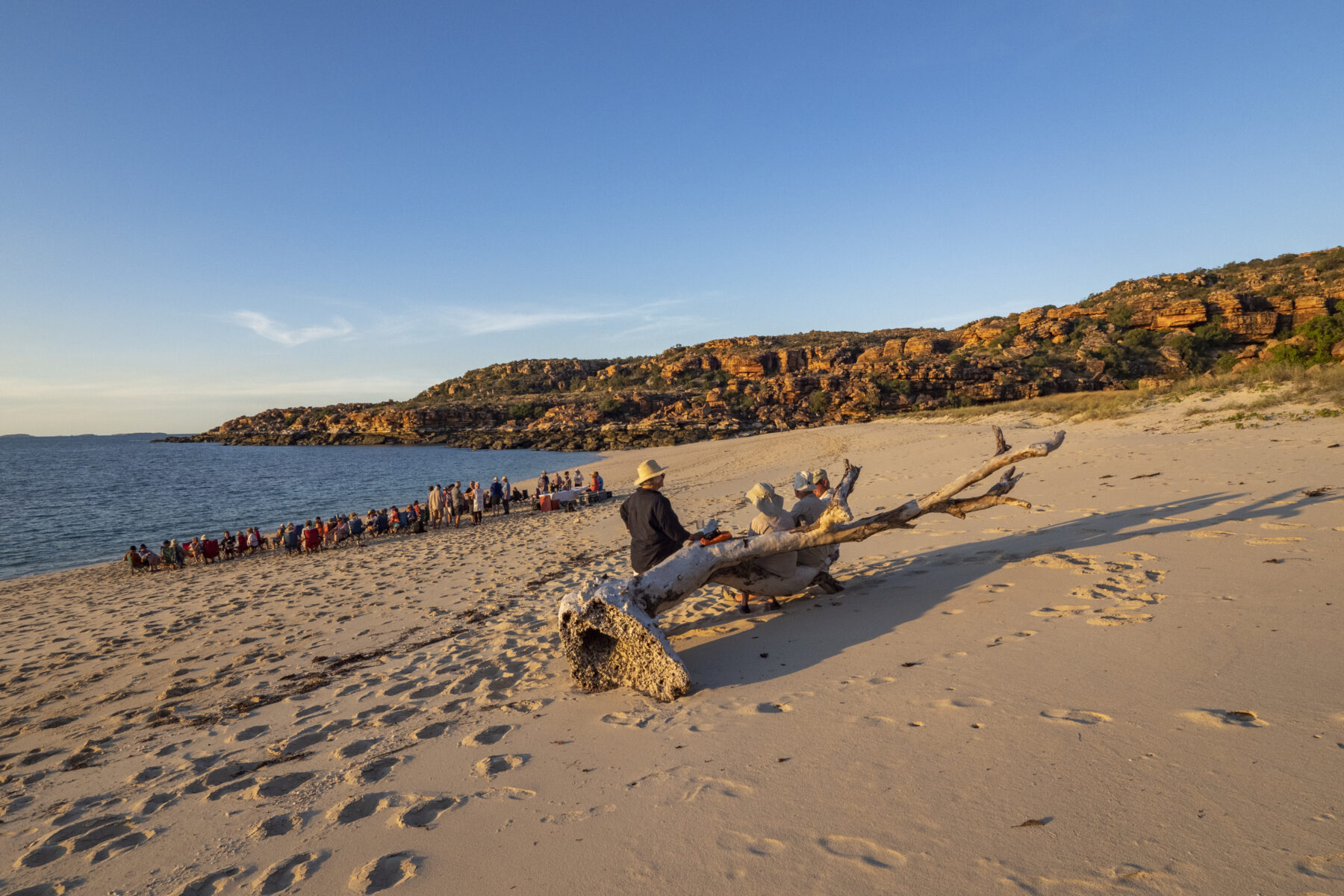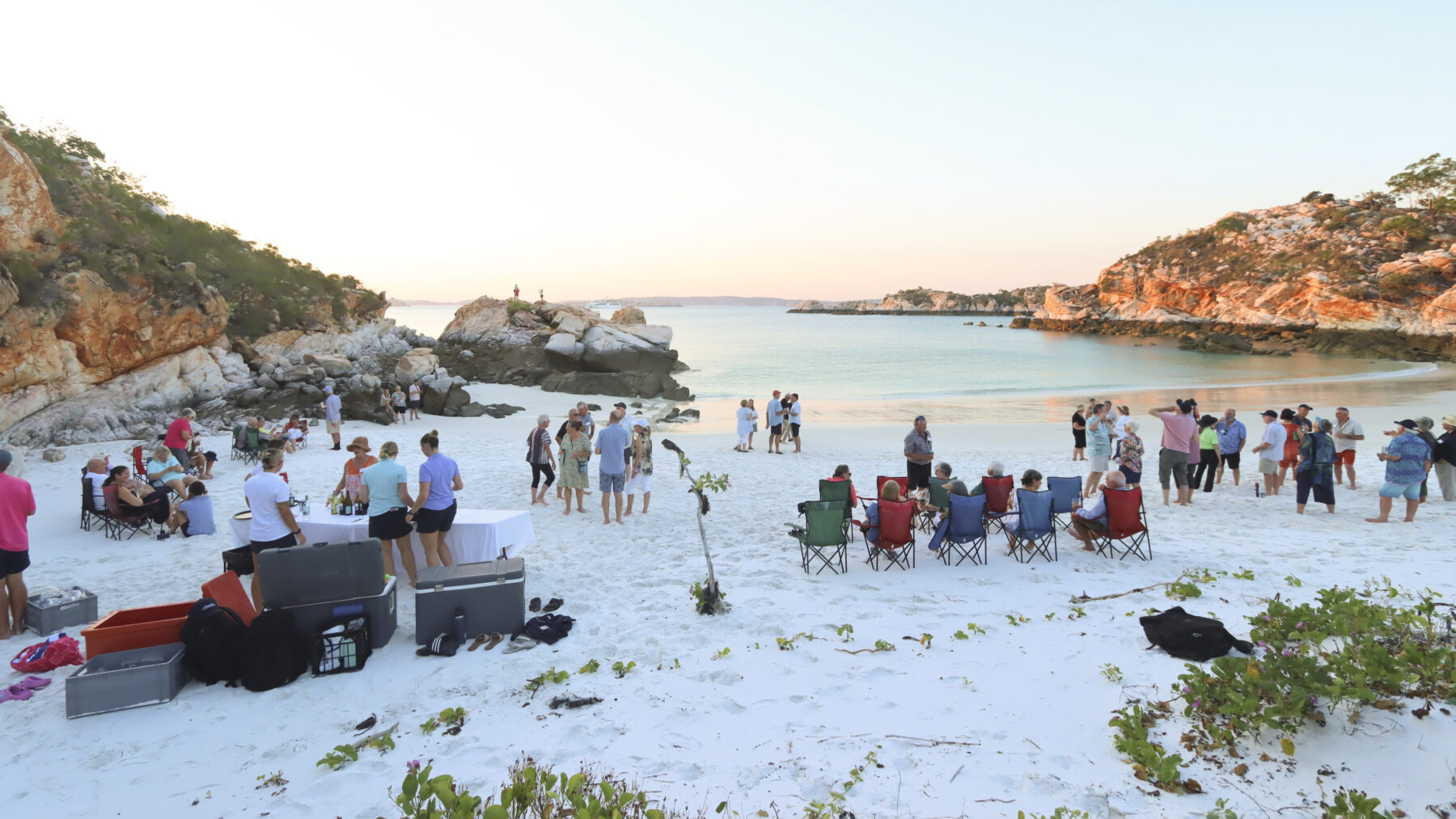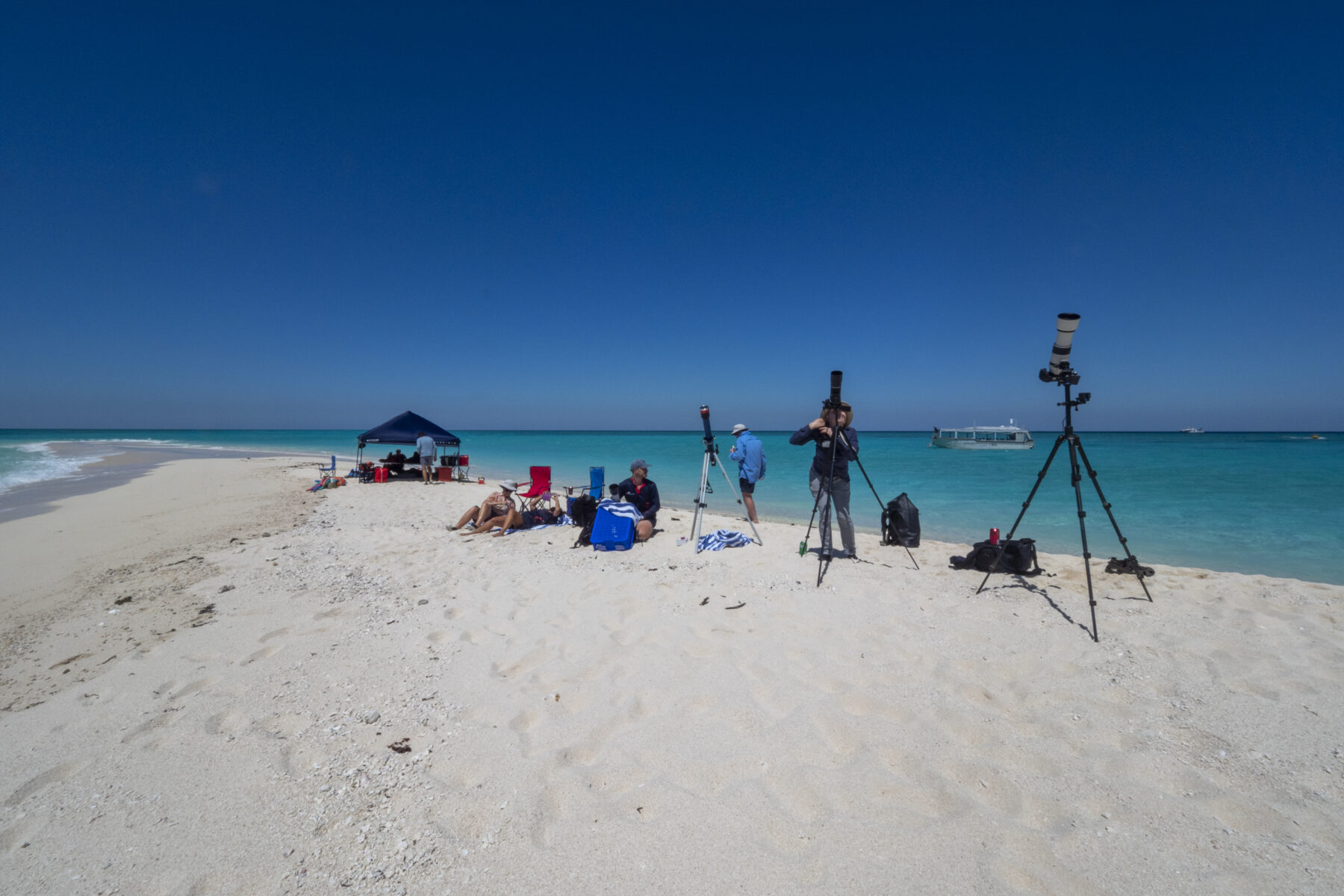Darwin 6.45AM, Saturday 15 April 2023. We’re standing with our baggage and sky-watching equipment outside one of Darwin’s imposing waterfront hotels, ready and waiting for our Big Adventure. All we need is the transport we booked the previous evening. What could possibly go wrong?
At 6.50am, we check with the hotel receptionist. “Oh yes, it was definitely booked. I’ll call them.”
Now it’s 6.55am. Check again. “They say they’re on the way.”
At 7am, when we’re supposed to be at the other end of the city’s lengthy Esplanade, joining the team we’ll be working with on a rare solar eclipse in five days: “I’ll call them again.”
It’s 7.05am – now with a hint of exasperation: “They still haven’t turned up…”
“No,” says the receptionist. “They hardly ever do. I don’t know why.” Consternation and looming hysteria. But then, at 7.10am, a rideshare car drops off an incoming passenger and we grab the vehicle before it departs. There is a benign Providence after all.
When you’re embarking on what you fondly expect will be the trip of a lifetime, a smooth start is highly desirable. But if a shaky one turns out to be the worst that goes wrong – well, you have much to be thankful for. And by the way, only one of us is subject to bouts of hysteria when travel arrangements go awry. The other is completely unflappable, with more than two decades of professional travel experience, from airline cabin crew to tourism management.
The solar eclipse of 20 April 2023 was to be a particularly unusual one. Like all total eclipses, the awe-inspiring phenomenon of the Moon covering the disc of the Sun is only seen if you are somewhere along the path of the Moon’s shadow across Earth’s surface, the so-called path of totality. The width of the shadow depends on the particular circumstances of the eclipse, as does the length of time you’re in darkness when it passes over you. That’s because neither the Moon’s orbit around Earth nor Earth’s around the Sun is perfectly circular, causing their relative distances to vary as they glide around one another in their celestial pas de trois.
Under the most favourable circumstances, the Moon’s shadow is more than 200km across. In this case, however, it would trace out a path only 40km wide, crossing a tiny portion of the Australian continent at Exmouth in Western Australia. Moreover, this was to be a particularly rare form of eclipse, called a hybrid. At the beginning and end of the path of totality (in the Indian and Pacific oceans), the Moon wouldn’t be close enough to Earth to block out the Sun completely. Any observers there would see an annular eclipse, in which the Moon’s black disc is surrounded by a brilliant ring of sunlight – the so-called ring of fire. In the central part of the path, however, the bulge of Earth’s curvature would bring observers near enough to the Moon to make the eclipse total, hiding the Sun’s luminous disc and revealing the delicate features of our star’s outer atmosphere.
A rare event like this was likely to bring overwhelming crowds of would-be eclipse watchers to the Exmouth peninsula, straining its limited resources, so we had long abandoned the idea of making a pilgrimage to view it. Then we had an invitation from Australian Geographic’s then Editor-in-chief, Chrissie Goldrick, to represent the organisation on an Australian Geographic Society expedition, in partnership with Coral Expeditions. Our means of transport was to be a ship operated by Coral Expeditions, bound on a special eclipse-plus-Kimberley cruise. We gave the offer a full two seconds of careful thought before accepting it with gratitude.
And so, on a sunny 15 April, and only slightly dishevelled from our close encounter with a missed boat, we joined the expedition ship Coral Adventurer at Darwin’s Fort Hill Wharf. The vessel is modern and well appointed, capable of accessing remote wilderness areas in safety and comfort (as the adverts say – and we can attest). Carrying a maximum of 120 passengers, the ship is large enough for ocean voyaging in comfort while maintaining a friendly and relaxed atmosphere for the passengers and crew (more advertising likewise attested). A significant enhancement since we’d last ventured along the Kimberley coast in 2009 was the use of lightweight 60-seat tenders, deployed hydraulically from the stern and eliminating steps and ladders. Dubbed Xplorers, Coral Expeditions describes the two craft as the “safari jeeps of the sea”, which they indeed proved to be.
Having boarded the ship and undergone the safety briefing, we were introduced to Captain Matthew Fryer and his crew and met our fellow guest presenters. Husband-and-wife photographers Scott Portelli and Rosie Leaney were, like us, invitees of Australian Geographic, while legendary Kimberley expert Ian Morris instantly became our go-to authority on everything Top End, from the region’s geology to its First Nations people, with whom he has close kinship connections. And, of course, there was the full complement of 120 passengers, most of whom we got to know throughout the voyage.
So – what was the plan for this solar eclipse expedition? Basically, it was to graft a path-of-totality detour onto an already spectacular Kimberley exploration cruise lasting two weeks. The idea of providing guests with an unforgettable experience independent of the eclipse (in case of cloud obscuration or other show-stoppers) was familiar to us from our own previous eclipse expeditions.

Of the Kimberley cruise itself, there’s much to enthuse about. The vessel’s gradual progress around the coast from Darwin to Broome was a classic introduction to the breathtaking landscapes, natural history and First Nations art of the region. Iconic locations such as Oomari Falls, Bigge Island, Prince Frederick Harbour, Horizontal Falls, the Lacepede Islands and the astounding appearing/disappearing Montgomery Reef duly overwhelmed our hearts and minds.
And for all this was a rugged expedition cruise, there was much that was refined for the passengers to experience. Not just the fine dining and pre-dinner drinks, but lectures by the guest presenters – and after-dinner movies if you craved still more screen time. And we did our bit, with astronomy and space-themed presentations, ranging from “Eclipses 101” to the damaging effects of light pollution on nocturnal wildlife and humans. Plus we provided a comprehensive account of the work of Australian Geographic, presented by Marnie cheerfully and openly masquerading as the journal’s Editor-in-chief.
Uppermost on both our minds during the first few days, though, was the eclipse itself, and as 20 April drew nearer, preparations grew with an intensity matched only by our mounting anxiety. Would the weather stay clear in the wake of the recent Tropical Cyclone Ilsa, for example? Were our online charts of the path of totality up to scratch? Would the small telescopes fitted with solar filters we’d helped to assemble for Coral Expeditions be any use at all on a moving vessel? It all remained to be seen.
Our initial discussions with Coral Expeditions had suggested that the best location to see the eclipse would be Scott Reef, some 440km north-west of Broome. But it was decided that Ashmore Reef, a site 240km NE of Scott Reef and almost directly north of Broome, would better fit the cruise itinerary, so that became the planned destination. However, time and tide are no followers of plans, and discussions with Captain Matt and his master mariners the day before the event indicated that to avoid a heavy swell detrimental to eclipse watching we would need to be on the western side of Ashmore – which would take us uncomfortably close to the edge of the shadow path.
A better bet would be our old friend Scott Reef, whose sheltered western side would place us right on the centre line of the shadow. It would also give us a full one minute and 15 seconds of totality – more than most other locations on the path. And it boasted a small sand cay that would allow a group of serious eclipse photographers, led by Scott and Rosie, to land and set up their cameras and telescopes on terra firma.

And so Scott Reef it was, with the day dawning bright and clear, and a full morning of astronomy-related talks to precede it. Although our location placed us firmly in the time zone of WA, the ship remained on Darwin time throughout the cruise, making the predicted start time for the eclipse a laid-back 11.57am. It was a long morning for the two of us, however, since we were privately spooked by the absence of any other vessels in the area – had we made an awful mistake? Presenting our lectures was a welcome distraction. But eventually, staring assiduously through filtered binoculars, we were relieved to see the almost-imperceptible black edge of the Moon’s disc begin its three hours and eight minutes passage across the face of the Sun, right on schedule. Yes, we were in the right place at the right time. The partial phase of the eclipse had begun.
A total eclipse is an event any impresario would be proud to have arranged. That tantalising first contact of the Moon’s disc is the start of a splendid one-and-a-half-hour spectacle that builds to an overwhelming climax when the Sun disappears altogether for a brief period. And then there’s another hour and a half of more relaxed viewing, as the Sun grows from a slender crescent back to its shining whole.
It’s easy to imagine the terror our distant forebears must have felt during such an event – surely evidence that the gods had forsaken them. And what a relief to see the Sun return to normality afterwards. Even for us 21st-century sophisticates, there is food for thought in the remarkable coincidence that allows total eclipses to take place. While the Moon is 400 times smaller than the Sun, it is on average 400 times closer to Earth, so the two bodies have the same angular diameter of half a degree in the sky, allowing one to cover the other perfectly.

Whatever you make of that cosmic fluke, eclipses today are generally regarded as excellent excuses for a party. And the Coral Adventurer’s eclipse was no different. The capacious sundeck on its uppermost level provided the perfect venue, sheltered by a large awning to offer protection while passengers lunched during the lengthy partial phase of the eclipse. With enough open space on the deck to allow frequent popping out to see how the eclipse was progressing, everyone took advantage of filtered binoculars and telescopes to crane their necks upwards to the spectacle high in the northern sky. The eclipse-watcher’s mantra of “never look directly at the Sun” had been well learnt. And some craft-minded adventurers made pinholes in sheets of paper, spelling out slogans like “Eclipses rock” or “Scott Reef 2023”, which projected tiny crescent-shaped images of the Sun onto the ground when held in the sunlight. Then, as the climax neared, passengers and crew gravitated towards those open areas or down to the bridge deck to get a clear view of the uncanny visual effects that herald a total eclipse, while we provided running commentaries in the two locations. The first thing you notice is the change in daylight. Yes, it’s getting darker as the Sun’s disc is progressively obscured, but our visual perception is so well adapted to changing light conditions that it’s only when a slender crescent of sunlight remains that you really notice it. What’s more obvious is a change in the quality of the light – the sky takes on a steely grey appearance as the Moon’s shadow races towards you at about 1km per second.
In the last few seconds before totality, strange rippling patterns race across any white surface – of which there are plenty on the upper decks of an expedition ship. They are called shadow bands, and result from the differing refractive properties of slightly warmer and cooler air being blown along in the atmosphere, only revealed when illuminated by a thin sliver of sunlight. Now is the time to look at the Sun itself, still through filters, to witness Baily’s Beads – blobs of light formed as the last remaining glimpses of the Sun’s disc filter through valleys in the Moon’s mountainous rim. (Francis Baily was a British astronomer who first noticed the effect during an eclipse in 1836.) Often, a single cluster of beads remains briefly, and taking off your filters or eclipse sunglasses will let you see its brilliance embedded in the Sun’s corona – the pearly outer atmosphere that now forms a complete circle around the Moon. This is the “diamond ring” effect, beloved of eclipse photographers and the immediate precursor to the total eclipse.

Those events all take place in a matter of seconds before the brief period of totality begins, and so it was with our eclipse at Scott Reef. As soon as the Sun’s disc was completely hidden, the corona shone out brightly, its streaks and striations the products of our star’s complex magnetism. Closer to the Moon’s black disc, pink veins of glowing hydrogen known as prominences traced plasma jets, tens of thousands of kilometres long, in the Sun’s inner atmosphere. The sky around the eclipsed Sun was dark enough for planets to be seen – Saturn, Jupiter, and lower down in the sky, brilliant Venus. And the whole scenario was accompanied by unbidden cheers and whoops from the crowd – a visceral response to this precise alignment of celestial bodies that we had all journeyed so far to see.
Our one minute and 15 seconds of totality started at 1.29pm, and seemed to last for about as long as those two seconds it had taken us to make up our minds to come on the expedition. All too soon, the visual phenomena paraded themselves in reverse – a diamond ring, Baily’s beads, shadow bands and a quickly growing crescent Sun. Celebrations were in order, and they went on throughout the afternoon, accompanied by admiring glances at the still-visible Venus and frequent inspections of the crescent Sun through filtered binoculars, as if to confirm that no, we hadn’t imagined this truly amazing phenomenon.

Eventually, at 3.05pm, the Moon finally slid off the disc of the Sun, bringing to an end our perfect view of the 2023 eclipse. And then, well, we continued on our merry way, exploring the Kimberley until we disembarked at Broome eight days later. But there’s a widely known problem with total eclipses, which really warrants a health warning. They are highly addictive! Many of the passengers on our eclipse cruise had seen several – some well into double figures. Some were even able to calculate how many minutes they had spent under the shadow of the Moon. The bottom line is that they are expensive, almost always involving a journey to some exotic part of the world to catch a few minutes of totality at best.
If that’s a problem for you, as it is for most of us, don’t despair. It won’t be too long before there’s an eclipse that comes to us, rather than the other way around. On 22 July 2028, the shadow of the Moon will cross the entire continent from the northern tip of WA to Sydney, before spanning the Bass Strait to give watchers in Aotearoa New Zealand their own taste of eclipse fever.
There you go – and remember where you heard it first. Be sure put it in your diary.
Fred Watson is Australia’s Astronomer-at-Large. You can find him on ABC Radio and the weekly Space Nuts podcast. His latest book for the young and young-at-heart is Spacewarp: Colliding Comets and Other Cosmic Catastrophes (NewSouth, 2021).
Marnie Ogg is a dark-sky advocate well known for her Dark Sky Conversations podcast and her advisory role in outdoor lighting policy. She is the founder of the Australasian Dark Sky Alliance and leads the Dark Sky Traveller science tour company.


